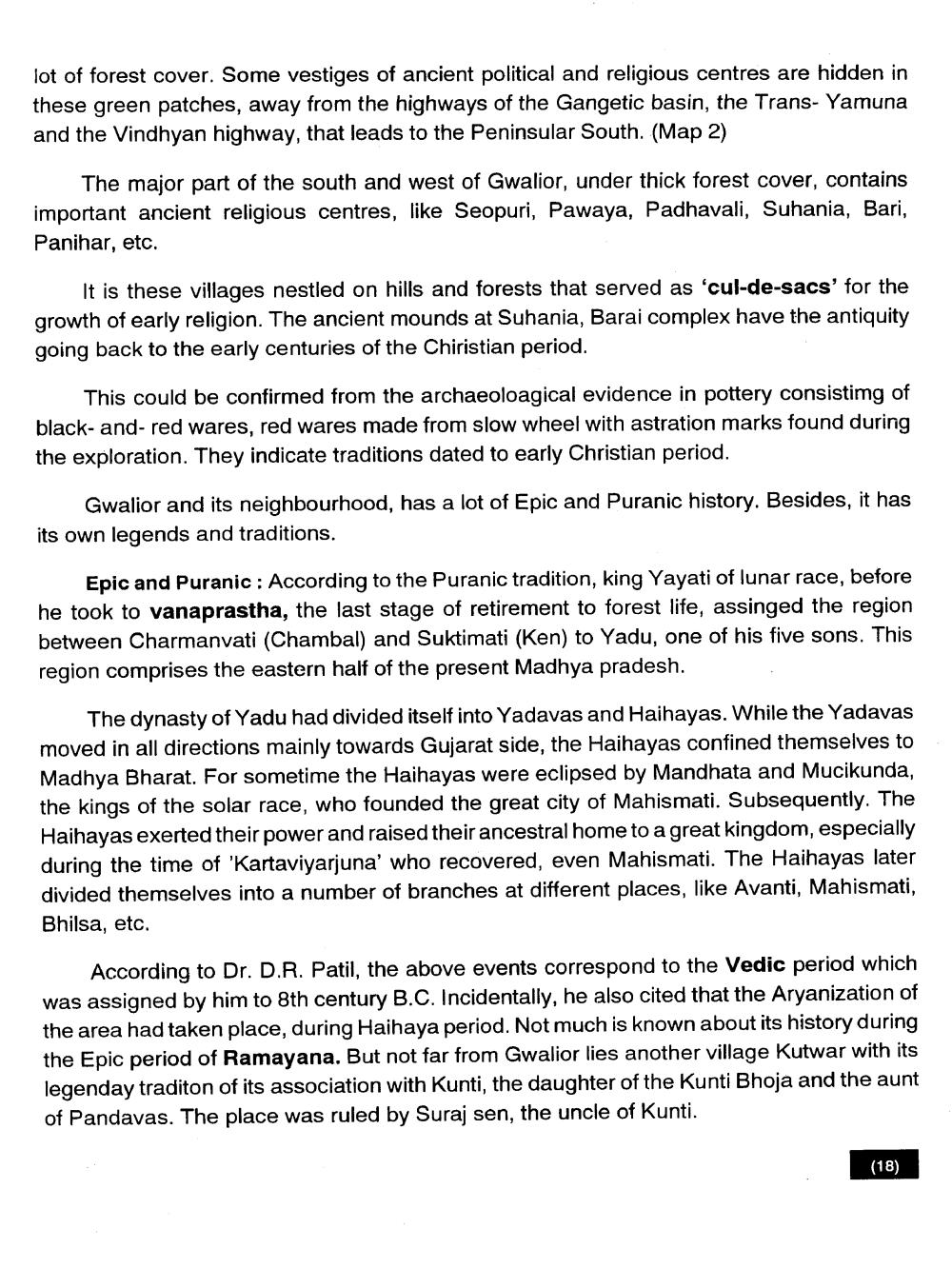________________
lot of forest cover. Some vestiges of ancient political and religious centres are hidden in these green patches, away from the highways of the Gangetic basin, the Trans- Yamuna and the Vindhyan highway, that leads to the Peninsular South. (Map 2)
The major part of the south and west of Gwalior, under thick forest cover, contains important ancient religious centres, like Seopuri, Pawaya, Padhavali, Suhania, Bari, Panihar, etc.
It is these villages nestled on hills and forests that served as 'cul-de-sacs' for the growth of early religion. The ancient mounds at Suhania, Barai complex have the antiquity going back to the early centuries of the Chiristian period.
This could be confirmed from the archaeoloagical evidence in pottery consistimg of black-and-red wares, red wares made from slow wheel with astration marks found during the exploration. They indicate traditions dated to early Christian period.
Gwalior and its neighbourhood, has a lot of Epic and Puranic history. Besides, it has its own legends and traditions.
Epic and Puranic : According to the Puranic tradition, king Yayati of lunar race, before he took to vanaprastha, the last stage of retirement to forest life, assinged the region between Charmanvati (Chambal) and Suktimati (Ken) to Yadu, one of his five sons. This region comprises the eastern half of the present Madhya pradesh.
The dynasty of Yadu had divided itself into Yadavas and Haihayas. While the Yadavas moved in all directions mainly towards Gujarat side, the Haihayas confined themselves to Madhya Bharat. For sometime the Haihayas were eclipsed by Mandhata and Mucikunda, the kings of the solar race, who founded the great city of Mahismati. Subsequently. The Haihayas exerted their power and raised their ancestral home to a great kingdom, especially during the time of 'Kartaviyarjuna' who recovered, even Mahismati. The Haihayas later divided themselves into a number of branches at different places, like Avanti, Mahismati, Bhilsa, etc.
According to Dr. D.R. Patil, the above events correspond to the Vedic period which was assigned by him to 8th century B.C. Incidentally, he also cited that the Aryanization of the area had taken place, during Haihaya period. Not much is known about its history during the Epic period of Ramayana. But not far from Gwalior lies another village Kutwar with its legenday traditon of its association with Kunti, the daughter of the Kunti Bhoja and the aunt of Pandavas. The place was ruled by Suraj sen, the uncle of Kunti.
(18)




